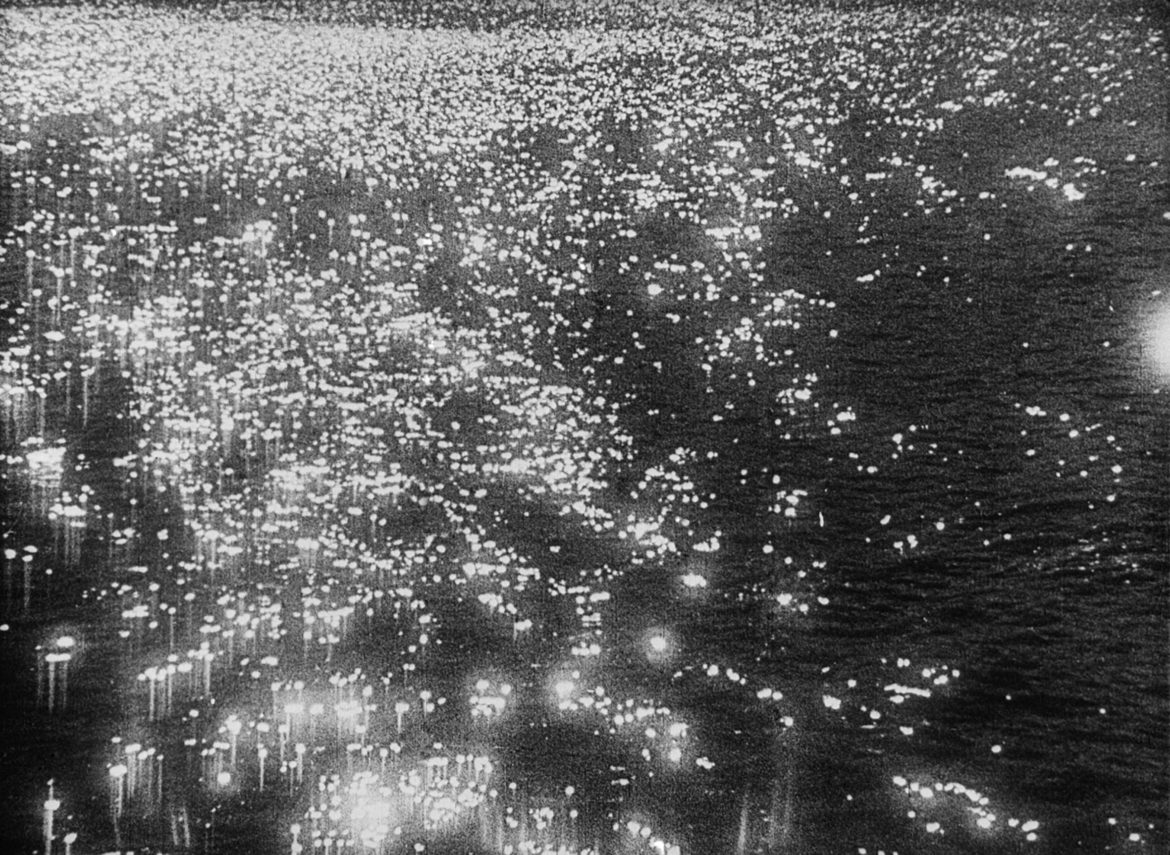Part of an ongoing effort to watch a set of films from non-White, non-U.S., non-male, and/or non-straight filmmakers and depart a little from the Western canon. The intro and full list can be found here.
The first image we see is a still of bound hands and a woman’s face. It’s also the last image we see two hours later. In between, the camera alternates between quick shots of feet in motion and machines at work, and very long takes of the sea, sky, and the faces of three people stranded on a small boat. Mario Peixote’s 1931 Limite is the only film the Brazilian author and poet ever completed, and its anti-narrative experiments continue to beguile and confound.
Long considered lost – its restoration from a final existing negative lasted from 1959 to 1978 – Limite is now routinely voted one of, if not the, great landmarks of Brazilian cinema. Rejecting both standard narrative aspects as well as the more pointed or political Surrealism of Bunuel and Man Ray, Peixote was fixated instead with what he and others called “the camera-brain,” the working through ideas through pure image alone. His scenario for Limite lists 220 camera shots, organized according to an internal structure he likened to “the invisible wheels of a clock.”
As such, there’s not much point in discussing “what happens” in Limite. The film is far more interested – exclusively interested, really – in the juxtaposition of frames, exploring angles of view and light sources, the fluid passage of time as we flashback to the pasts of our three boat-bound protagonist (and learn little along the way), the workings of wheels on a train track or the crashing of waves against rocks. If there’s a “lesson” in its visual sequences – and there’s almost certainly not – it might be the ways in which all things are bound to cycles and to each other.
But Peixote would reject that out of hand. His interest is in kinetic movement and stillness, and the spaces in between. There is an existential emptiness to the figures on the boat, and arguably a sense of alienation as the camera trains in on nothing but feet in movement in a city square, while ignoring the rest of the bodies those feet are attached to. Still, this is inserting meaning where none was intended, apart from the meaning found in the collision of perspectives, silences, and the images themselves.
Peixote never made another film, though not for lack of trying. Limite was screened for Orson Welles on a trip to South America, and Eisenstein was (unsurprisingly) a fan. (An interesting sidenote: an article praising the film attributed to Eisenstein was, in fact, written by Peixote himself, further obscuring its weird history and reception.)
Limite shouldn’t be relegated to a footnote to the Avant-Garde, however. It’s a feature-length exploration of the moods and resonances film can generate, especially in its total rejection of analysis. It’s a shame Peixote’s other cinematic projects never came to fruition, because Limite stands as a testament to a unique vision and approach that’s rather unlike anything else.
Next up: Jean Cocteau’s Blood of a Poet (1932)

